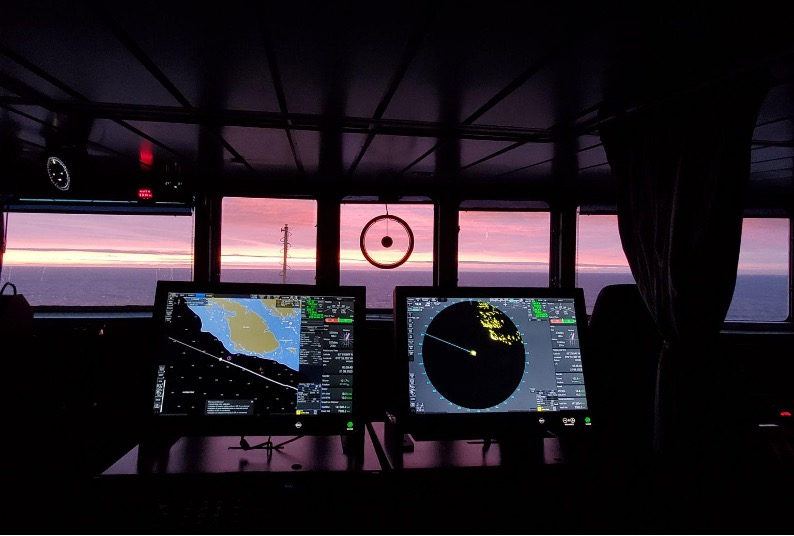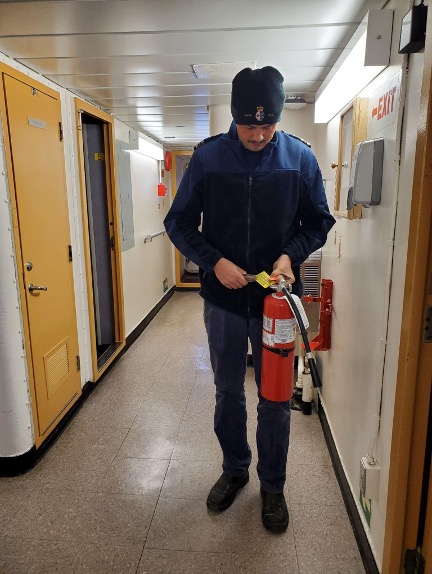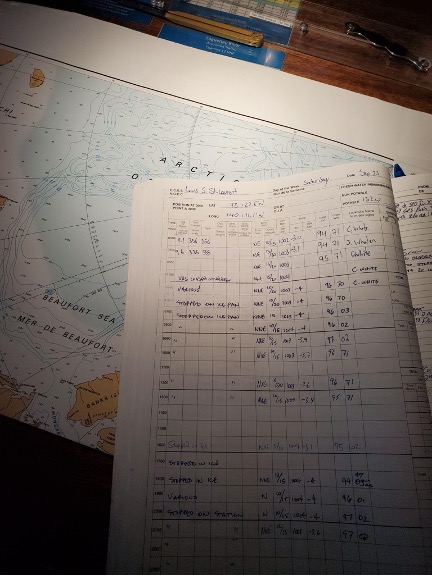Dispatch 14: A Day in the Life of a Watchkeeping Officer
Abby Marshall and Maurita Gibson
September 28, 2023
Dispatch 14: A Day in the Life of a Watchkeeping Officer
Our names are Abby Marshall and Maurita Gibson, and we are officer cadets from the Canadian Coast Guard College. This trip is part of our at-sea training. Today, we’ll write about the Watchkeeping Officers.
Welcome to the Bridge on the Louis S. St-Laurent! After completing a Watchkeeping Mate certificate from an accredited program, this is the office of a Watchkeeping Officer!
Here during a 24-hour period the Watchkeeping Officer works a rotating schedule:
- 4 hours on watch
- 4 hours completing day work
- 4 hours off
- 4 hours on watch
- 8 hours off
Their shift starts by arriving 10-15 minutes early to relieve the previous Officer of the Watch (OOW), and complete a watch handover. This includes updates of the course being steered (by the Quartermaster or autopilot), how many main engines and steering pumps are being used, as well as any ice or traffic updates. Twice daily an email of the ship’s activities is sent to Ottawa. Entries are made in the logbook hourly regarding visibility, wind, air and water temperature, vessel speed, compass bearings, and latitude and longitude coordinates. The vessel position is also plotted on a paper chart.
There is navigational equipment to be monitored - continual checks and tuning must be made of the radars, verification of the route on the electronic charts, and references made to the depth sounder. The bridge is a central point onboard, handling communications to coordinate with the engine room, helicopter operations, deck crew, and science endeavors.
On the Louis there are three Watchkeeping Officers - the 1st, 2nd and 3rd Officers. During their day work shifts each of them have different tasks and checklists to complete over the course of their 28-day shift.
The 1st Officer, Andy Stultz, is responsible for the inspection of portable and fixed firefighting systems and equipment, fire doors, breathing apparatus, turnout gear, helicopter emergency equipment, general alarms, and any other related equipment used to detect and extinguish fire.
The 2nd Officer, Brian Forrest, completes corrections of the paper and electronic charts and publications carried on board, ensuring they are up-to-date. He is also responsible for maintaining the clocks, navigation instruments and the steaming log.
The 3rd Officer, Eli LaForrest maintains the vessel’s lifesaving equipment, including lifeboats, life rafts, lifejackets, immersion suits, flares, EPIRBs (or Emergency Position Indicating Radio Beacons), Search and rescue radar Transponders (SARTs) and emergency radios.
If there is anything you need, the Bridge team is happy to help point you in the right direction!



